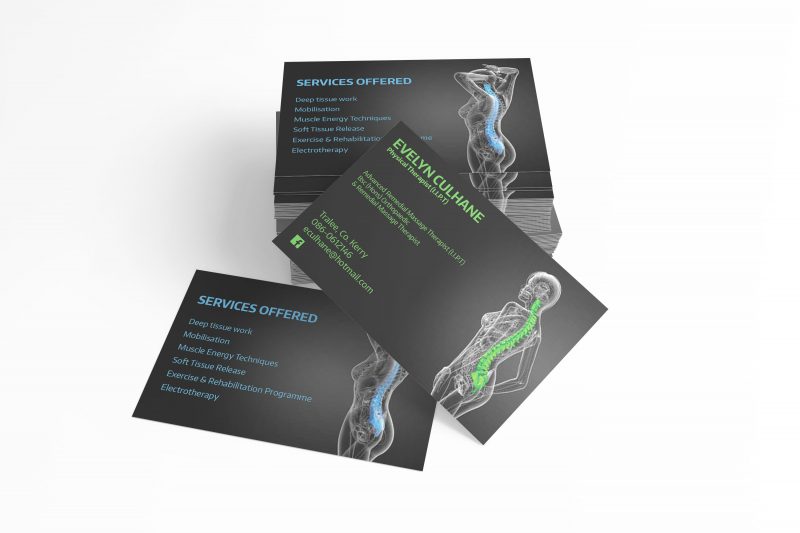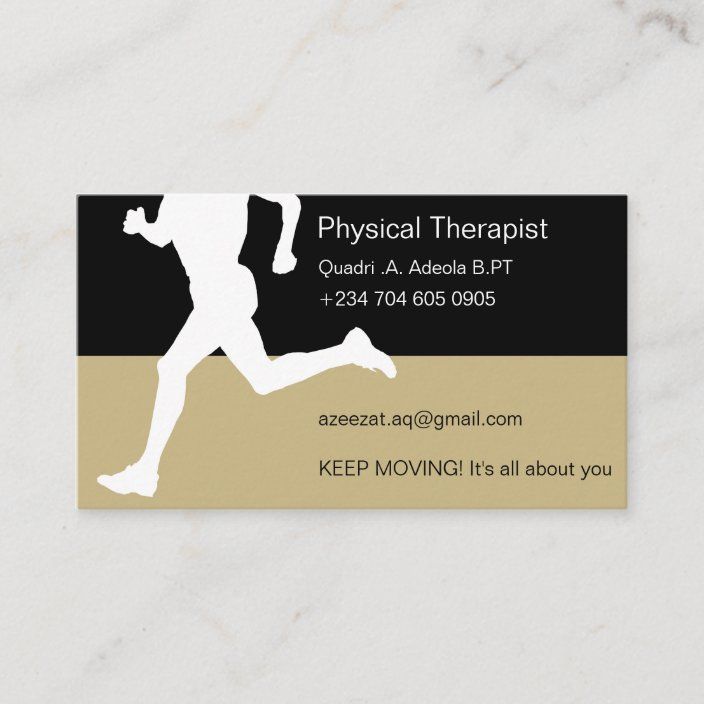
Are you a physical therapist looking to promote your practice and attract new clients? One effective way to leave a lasting impression on potential patients is through the use of well-designed and professional-looking business cards. In this article, we will explore the importance of physical therapist business cards, discuss key elements to consider when creating them, and provide tips on how to make them stand out from the competition.
Importance of Physical Therapist Business Cards

As a physical therapist, your business cards serve as a tangible representation of your practice and expertise. They are a valuable tool for networking and establishing credibility in the healthcare industry. Whether you hand them out at conferences, leave them at local businesses, or simply share them with acquaintances, business cards create awareness and promote your services in a professional manner.
Making a Lasting First Impression
First impressions matter, and your business card is often the first point of contact a potential patient has with your practice. A well-designed, visually appealing, and informative business card can immediately convey professionalism, trustworthiness, and expertise. It serves as a lasting reminder of your encounter, making it more likely that the recipient will remember and contact you when they require physical therapy services.
Building a Strong Network
Physical therapist business cards also play a crucial role in building and expanding your professional network. By exchanging business cards with colleagues, professionals in related fields, and potential clients, you increase the likelihood of referrals and collaborations. Additionally, business cards provide a convenient way for satisfied patients to recommend your services to their friends, family, and acquaintances.
Key Elements of Physical Therapist Business Cards

When designing your physical therapist business cards, it’s important to include key elements that effectively represent your practice and convey the necessary information. Here are some essential components to consider:
1. Contact Information
Ensure that your business card includes your full name, title (physical therapist), clinic or practice name, address, phone number, email address, and website. Providing multiple contact methods allows potential patients to reach you through their preferred channel. Make sure the fonts are legible and the contact information is easy to find on the card.
2. Logo and Branding
Incorporating your logo and consistent branding elements on your business card creates a cohesive and professional image. Use colors, fonts, and graphics that align with your brand identity to reinforce recognition and differentiation. A well-designed logo can also add a sense of legitimacy and establish credibility.
3. Professional Design
A visually pleasing design layout can enhance the overall impact of your business card. Consider using a clean and uncluttered design that aligns with your brand identity. Incorporate white space to create visual balance and make the information easier to read. Select fonts that are legible and appropriate for your brand image. Avoid overcrowding the card with unnecessary information or excessive graphics.
4. Specializations and Services
Highlighting your areas of specialization and the services you offer can help potential patients understand the scope of your expertise. Use a concise and clear statement to convey your unique value proposition. For example, you might mention specialties such as orthopedic rehabilitation, sports injuries, or geriatric physical therapy.
5. Testimonials or Reviews
Including brief testimonials or positive reviews from satisfied clients on your business card can provide social proof of your skills and dedication. These endorsements can help establish trust and confidence among potential patients who may be hesitant to seek physical therapy services. Choose testimonials that highlight your unique strengths and the positive experiences of your patients.
6. QR Code or Appointment Scheduling Link
Incorporating a QR code or a link to an online appointment scheduling system on your business card can offer convenience to potential patients. This allows them to easily access your website or book appointments directly, eliminating the need for them to search for your contact information separately.
Tips to Make Your Business Cards Stand Out
Now that you understand the key elements to include in your physical therapist business cards, here are some tips to make them stand out and leave a lasting impression:
1. Use High-Quality Materials
Investing in high-quality cardstock and printing can significantly enhance the visual appeal and durability of your business cards. Choose a sufficient thickness to ensure they don’t easily bend or tear. A smooth or matte finish can add a touch of professionalism to the design.
2. Incorporate Relevant Imagery
Consider adding relevant imagery to your business card design. This could include pictures of physical therapy equipment, images representing different exercise techniques, or even photos of satisfied patients (with their permission). However, be cautious not to overcrowd the card with excessive visuals that distract from the essential information.
3. Consider Unique Shapes or Sizes
While traditional rectangular business cards are common, exploring unique shapes or sizes can make your card more memorable. Circular or die-cut cards can grab attention and stand out from the stack of rectangular cards. Ensure the shape complements your branding and doesn’t compromise the legibility of the information.
4. Double-Sided Printing
To maximize the space available on your business card, consider utilizing both sides for printing. The front side can contain your logo, contact information, and a concise tagline, while the back side can include details about your specialties, testimonials, or appointment scheduling QR codes. Double-sided printing allows you to provide additional information without overwhelming the card’s design.
Conclusion

In conclusion, physical therapist business cards play a vital role in promoting your practice, building professional connections, and leaving a lasting impression on potential patients. By including key elements such as contact information, logo and branding, professional design, specialties, testimonials, and appointment scheduling links, you can create an impactful and effective business card. Remember to use high-quality materials, consider unique shapes or sizes, and make strategic use of both sides of the card. With well-designed business cards, you can enhance your professional image, increase brand recognition, and attract new clients to your physical therapy practice. So, don’t underestimate the power of a well-crafted physical therapist business card. Start designing yours today and make a lasting impression!
Ava Taylor’s passion for branding and marketing shines through in her dynamic writing. She brings a unique perspective with her background in event planning, infusing creativity into her content. When she’s not writing, Ava enjoys organizing community events and gatherings.